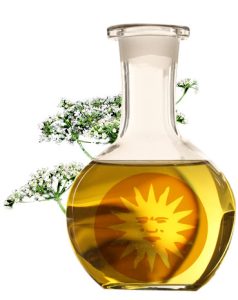Aniseed essential Oil (Pimpinella anisum)
From Esencias Lorente, we are pleased to present our Anise essence, exclusively produced for industrial use. Extracted from meticulously selected anise seeds, our essential oil is obtained through steam distillation in stainless steel stills. This method ensures the purity and quality of our essence, preserving its aromatic properties intact. Ideal for industrial applications in the food, pharmaceutical, and cosmetic industries, our Anise essential oil adds a touch of distinction and quality to your products. With years of experience in distilling Mediterranean aromatic plants, Esencias Lorente offers the finest and purest Anise essence to meet all your industrial needs. Trust us to elevate the aroma and flavor of anise to a new level of excellence in your products
Description: Essential Oil melt appearance, dark yellow and smell anisic, sweet.
Bloom: This herb blooms from June.
Growth: this herb is growing and all production comes from Andalusia Spanish.
Composition: Essentially this consists mainly of anethole (80-90%).
Use: Mainly for perfumery and pharmacy.
REQUEST A QUOTE WITHOUT COMMITMENT
TECHNICAL TABLE OF ANISE ESSENCE
ORGANOLEPTIC INFORMATION
PHYSICAL-CHEMICAL INFORMATION
CHEMICAL COMPOSITION (Active Principles)
Anise essential oil is obtained from the seeds of the Pimpinella anisum plant and has a distinctive aroma with a sweet, anise flavor. Here are some of the common chemical components found in anise essential oil:
- Anethole: It is the main component of anise essential oil, giving it its characteristic aroma and flavor. In addition to its use in the food and perfume industry, anethole has antibacterial and antifungal properties.
- Methylchavicol (estragole): Present in some varieties of anise, it has antioxidant properties and may have beneficial health effects.
- Fenchone: Another component contributing to the taste profile of anise. Fenchone is also found in other plants and has antioxidant properties.
- Limonene: A common terpene in many citrus essential oils, providing a refreshing scent and potential health benefits.
- Alpha-pinene and Beta-pinene: Terpenes that contribute to the aroma and may have antimicrobial properties.
It is important to note that, although anise essential oil is used in the food industry and aromatherapy, its use should be moderate and cautious, only under the guidance of specialists. Additionally, the exact chemical composition may vary depending on the variety of anise and the method of essential oil extraction.
Description of Anise:
Anise (Pimpinella anisum) is an annual herbaceous plant belonging to the Apiaceae family, known for its aromatic seeds that have a sweet and distinctive licorice flavor. This plant is native to the Mediterranean region and has been cultivated and used for its culinary and medicinal properties for centuries.
- Plant and Leaves: Anise is a plant with a thin stem and feathery, divided leaves that resemble those of other plants in the Apiaceae family, such as fennel and dill.
- Flowers: It produces small white flowers in umbels that cluster at the top of the stems.
- Fruits and Seeds: Anise seeds are the most commonly used part of the plant. They are small, oval, brown, and have a distinctive licorice flavor and aroma.
Uses and Applications of Anise (Pimpinella anisum):
- Culinary: Anise seeds are commonly used in cooking to flavor a variety of dishes. They can be part of spice blends, used in baking, in the preparation of sweets, liqueurs (such as ouzo and anisette), as well as in some beverages and teas.
- Medicinal: Anise has been traditionally used in folk medicine for its carminative and digestive properties. It is believed to help relieve indigestion, gas, and other mild gastrointestinal disorders.
- Infusions and Teas: Anise seeds are used to prepare infusions and teas consumed to aid digestion and as a relaxing beverage.
- Aromatherapy: Anise essential oil is used in aromatherapy for its distinctive aroma and is believed to have relaxing properties.
- Personal Care: Anise can also be found in some oral care products, such as toothpaste and mouthwashes, due to its aromatic and refreshing properties.
It’s important to note that, although anise is commonly used in cooking and homemade preparations for well-being, it should be consumed in moderation, and in the case of medicinal use, consulting with a healthcare professional is recommended.
